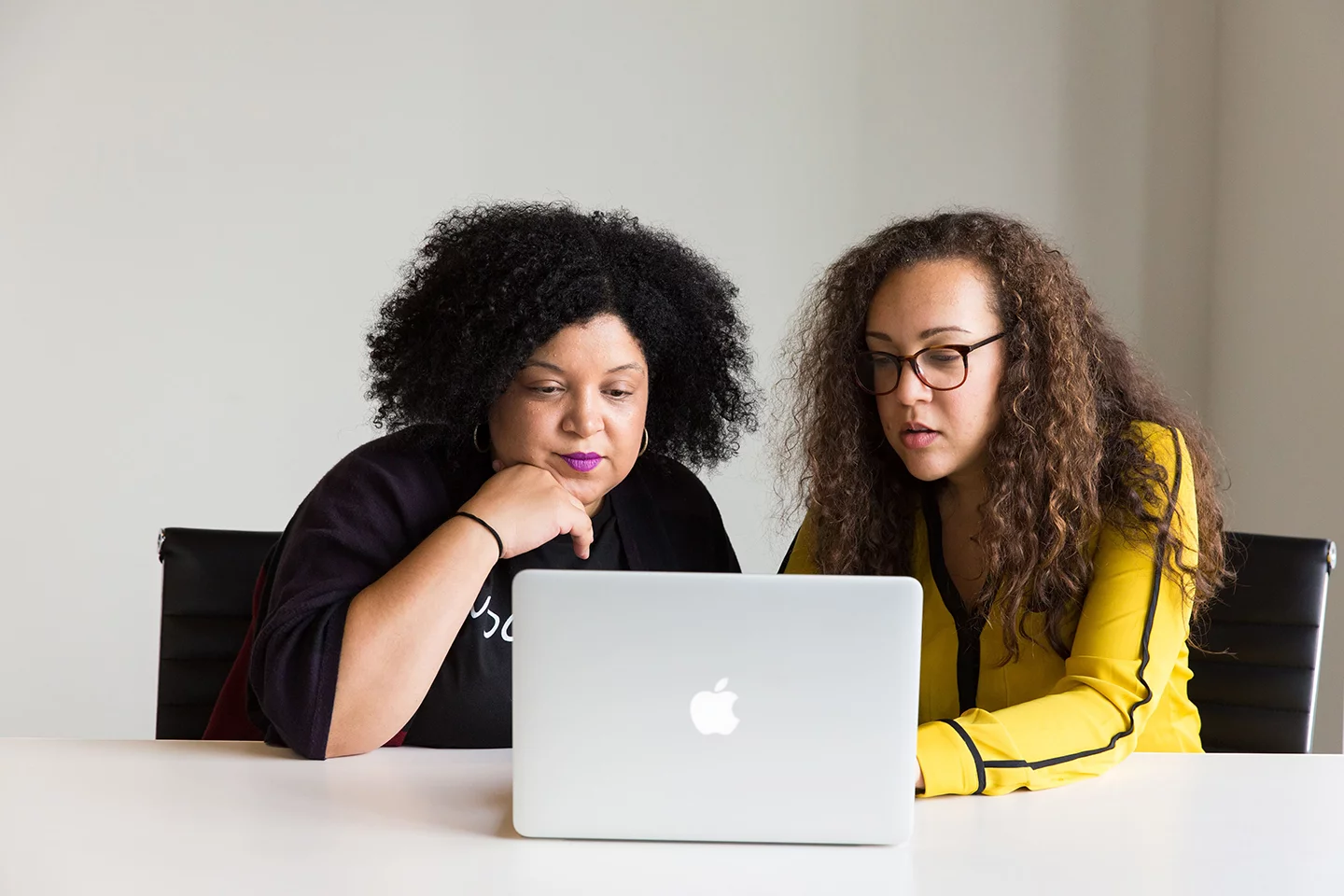Our Future of Work Roundtable series recently welcomed Efrain “Efry” Ayala-Johnson of United Airlines to discuss his company’s layered approach to organizational training and creating an atmosphere of psychological safety. We learned how United fosters a “speak up” environment to keep everyone safe on the ground and in the air. Below is an excerpt from Ayala-Johnson’s informative presentation.
To experience Mursion’s virtual reality simulations and see for yourself how this platform can support your own business to learn how VR can play a role in honing the interpersonal skills needed to foster a culture of coaching, schedule a demo today.
“If you’ve ever been on a plane, you’ve encountered our airport operations employees. They’re the people that check you in in the lobby and take your bags. They’re the people who check you in at the gate, make sure that you’re boarding the correct plane. They’re also the people that help with your baggage, but there’s a lot more to airport operations than just those three functions. The subject that we’re talking about today is this concept of building safety.
As you can imagine, for United Airlines, and truly, any airline, safety is our number one priority. We say this on the plane, flight attendants say it, and it really is. We’re flying a big metal tube through the air with fuel and people in it, so safety is paramount. Talk about grossly simplifying my business, but there you go. The important thing, though, for us, recently, is that we’ve always had a focus on what we refer to now as environmental or physical safety.
Physical safety being of, course, of yourself, your physical body, making sure that you don’t lose a limb when you’re at work. Environmental safety is the environment around us, the context in which we work. Is this a safe environment? This concept of building safety from the inside and out, that we’re going to expand a little bit more in the next couple of seconds, is the fact that safety also has a psychological component. That psychological safety means that people need to feel comfortable bringing their emotions to work and also their intellect.
That psychological safety means that people need to feel comfortable bringing their emotions to work and also their intellect.
Here at United, this is not new. We’ve been working to really rebuild trust with our employees, with our customers. This goes back several years. There’s been a lot of things that prompted us to move to that, and I could go all the way back to our merger with United and Continental Airlines, but the real important part is that the entire organization, based on our CEO’s imperative, has been focused on rebuilding and maintaining trust with our employees, with our shareholders, with our customers.
Once we establish that trust, then we wanted to refocus on operational performance, etcetera. Even throughout the pandemic, we did not let this objective go.
Obviously, the tactics that we use to deploy this changed, but as we continue to implement this concept of building on core4, and the core4 is part of our decision-making matrix to be safe, caring, dependable, and accountable, we’re moving forward by really implementing all of those components and ensuring safety both for our airline, our employees, and our customers.
Learning Programs for Building Psychological Safety
One way in which we’re doing that with the airport operations organizations, that we’re expanding the value that global learning provides. We’ve always done operational training, obviously. How do you put the jet bridge on the plane? How do you do this? How do you operate the systems?
We’re really adding layers to all of that training, making sure that service is more highlighted than it was in the past and making sure that the connection between employees and their leaders is also highlighted in the operation training, as opposed to, ‘Just click this button. This is what it does.’
Three areas that we very intentionally planned to deploy, and we planned this all during the pandemic and even started before the pandemic, is to increase the leadership effectiveness of our leadership ecosystem in airports, refocus on safety and practice beyond environmental and physical safety and also bring in diversity, equity, and inclusion practices that enabled us to even expand the conversation, ‘Are we being inclusive? Are we not just promoting people to come in and bring their full selves to work, but then are we actually allowing them to do so once they’re here?’
Are we being inclusive? Are we not just promoting people to come in and bring their full selves to work, but then are we actually allowing them to do so once they’re here?
Our partnership with Mursion is, on the surface, very much connected to the leadership effectiveness component, because once we deliver the classroom learning that we were hoping to do, which included aspects of change management, strategy positioning, as well as employee engagement, and skill-building, Mursion helps us to provide the learning, reinforcement, and ongoing coaching to add stickiness to our leadership effectiveness trainings.
The really cool part is that the way in which we use Mursion, or really, the way in which Mursion helps people to learn goes well beyond leadership effectiveness, because the topics could be about safety, could be about respect at work, and about coaching as well. Because it’s such a real-life scenario and the simulation specialists respond in a very organic way, the conversation can move in a lot of different directions.
Creating Safe Spaces for Authentic Practice
Our audience has told us that Mursion simulations feel so real that they get very anxious about having them, which means that they care and that they’re very real for them as well, and even though anxious, still very safe. I’m not in a classroom. No one is looking at me. It’s just me and the simulation specialist. I’m able to absorb feedback a little bit more readily. I’m able to practice my skills, even if I don’t think that I’m as good at them as I could be.
I mentioned earlier that you’ve probably had a lot of engagement with airport operations because of customer service and baggage handling, etcetera, but you’ve also had engagement with our catering organization. These are the employees who stock the beverage cart. When you’re on a plane, and you say, ‘Can I have a ginger ale?’ If our catering operations team didn’t stock that, we wouldn’t have the ginger ale. Because the catering organization historically, I’m talking like 10 years ago, was not seen as a customer-facing department, they often received a lot less leadership training than we would have liked.
Several years ago, we decided to change that paradigm and really include our catering operations employees into everything else that we do with airport operations. Because they were a little bit far behind from a development perspective, we went right off the bat with some coaching learning, coaching practice, coaching model, and then using Mursion to help us reinforce all of those practices.
Apparently, not only was United the first airline domestically to have stewardesses, because that’s what we called them back then, but apparently, we’re also responsible for being the first to put Mursion avatars in hairnets. It’s a history-making kind of place. This is an example of what we customized for that leadership program.
The uniform that these employees use is a white lab coat with a badge and a hairnet, so we were able to customize it to make the situation even more real. Let me tell you, our participants who were going through these were actually really surprised. When we told them it was an avatar, they were expecting to see something that was a little bit more cartoony. We did get that feedback, and then they were extremely surprised when the person shows up, they were in a lab coat, a United patch, and a hairnet, and they’re like, ‘Oh, wow, this is my employee.’
Jamie from Mursion: What is a measure of success for you and United in this engagement? How is that going to look for you?
Efry: A couple of different things, we’re still working on that for the new ongoing deployment, what the specific metrics are going to be, but I can tell you that for the catering deployment that we did just before the pandemic, some of our measurements of success included, first and foremost, the supervisor’s willingness and ability from just their personal motivation to want to handle safety concerns.
When we polled supervisors, both formally and a survey and also informally through one-on-ones and coaching scenarios, there was a very strong theme of, ‘I just don’t know how to bring it up with them,’ or, ‘I just don’t feel comfortable. I’m afraid they’re going to get defensive, and I’m not going to know how to handle the situation.’ Even the willingness to engage in the conversation, almost like it’s okay to get it wrong. It’s not OK to not have the conversation. It’s not OK to get it wrong. We want you to improve, but you see where I’m going.
That was a success metric that we would start seeing those patterns change. Another key success metric was actually the occurrence of the conversations because we do have audits. We do have auditors that come in and see, oh, a safety infraction just occurred, or a safety risk just occurred. The supervisor’s down here. The supervisor didn’t manage it. Then what?
We wanted to make our audits match the expected behaviors more, and we knew that by the behavior that we needed to change was bringing the managers in and the supervisors in to have those conversations. Bringing down those instances of disconnect was the other metric.
Jamie: Awesome, thank you for sharing that. That actually reminds me that you had shared with me another tactic you used in terms of getting people to buy into training, and when we talked about getting your senior leaders to buy into this training and have an understanding of how important that is, and you did so by not just saying, ‘Here’s what we’re doing.’ Share a little bit about how you went about that process.
Efry: Oh, no, we did not just share; we put them in the situation. We did share an example of the video, but we showed it in stills so that they would at least have some basic example of what it would look like. We actually had one of our directors, in the operation, do a practice run.
Not only did this person had to have the courage to practice, but then it gave everybody else the opportunity to see how organic it actually is. It’s never going to be perfect because it is organic, and that’s the beauty of it. I’m telling you, I don’t think I have ever moved a project forward from concept to stakeholder approval so rapidly, because once they saw how real the scenario is, but at the same time, how safe, as a learner, I feel safe, because it’s just me.
In a real-life scenario, it would just be me and the simulation specialist, so it’s a lot safer, but still, very real.
Subscribe for the latest Mursion articles and updates.
By clicking the sign up button above, you consent to allow Mursion to store and process the personal information submitted above to provide you the content requested. View our Terms and Conditions.




